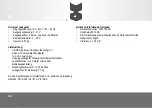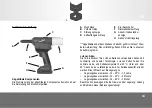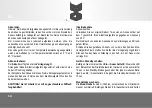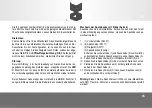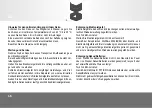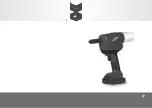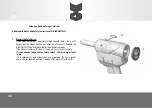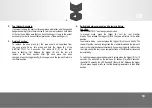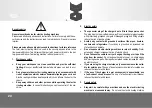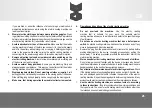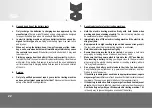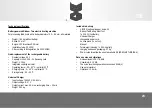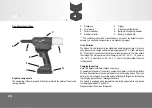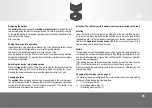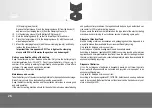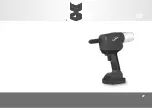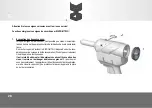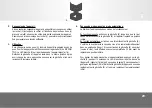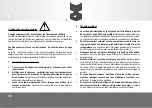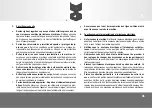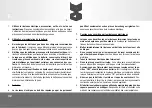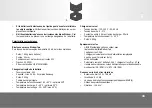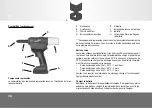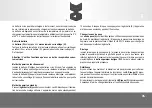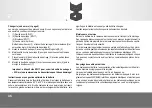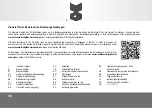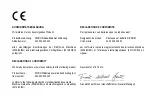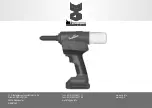
26
(4) Clamping jaws (3 parts)
Remove the front sleeve (1) and the clamping sleeve (2) from the device (3)
and remove the clamping jaws (4) from the clamping sleeve (2).
III. Oil the clamping sleeve (2) with Molykote® D grease (5).
IV. Hold the clamping sleeve (2) so that its forward part is faced down.
V. Place the clamping jaws (4) in the clamping sleeve (2) with their smooth
sides facing outwards.
VI. Mount the clamping sleeve (2) with the new clamping jaws (4) and finally
replace the forward sleeve (1).
Important! Use two spanners SW 17 and tighten the clamping
sleeve with 22 Nm. Otherwise the gearbox can be damaged!
Notices on optimal handling of the battery
Keep the battery away from wetness and water. Only store the battery at opti-
mum temperatures from -30 to 25°C. Do not leave the battery in the car, e.g. in
summer. If the battery is working for significantly shorter periods of time after a
recharge, it is used up and needs to be replaced.
Please consider the notices for disposal.
Maintenance and service
Take the battery out of the electric riveting machine for transportation and storage.
Risk of injury occurs if you inadvertently press the power switch.
Keep the electric riveting machine and the ventilation slots clean to ensure good
and safe operation.
If the electric riveting machine should fail despite the meticulous manufacturing
and quality control procedures, the repairs should be done by an authorized ser-
vice center for VVG electric riveting devices.
Please, quote the serial number indicated on the type label of the electric riveting
machine whenever turning to our customer service or ordering spare parts.
Disposal of Electical Tools
Electric riveting machines, accessories and packaging should be disposed in a
way which makes them available for environment-friendly recycling.
Only valid for European Union countries:
Do not dispose of electric riveting machines in household waste.
According to European regulation 2002/96/EG concerning electric and electronic
appliances and its implementation in national laws, the electric riveting machines
that are not functional need to be collected separately to make them available for
environment-friendly recycling.
Disposal of Batteries:
Li-Ion: Do not dispose of batteries in household waste, do not throw them into
fire or water. Batteries should be collected and recycled or disposed of in an
environment-friendly way.
Only valid for European Union countries:
According to European regulation 91/157/EWG, defective and used up batteries
need to be recycled. Batteries that are not functional can be handed over at your
store or directly at VVG.
GB
Summary of Contents for Rivdom TWO2
Page 1: ...1 ORIGINALBETRIEBSANLEITUNG F Notice originale GB Original instructions ...
Page 2: ......
Page 6: ...6 I II III IV V VI 1 1 2 3 4 5 D ...
Page 17: ...17 D ...
Page 27: ...27 GB ...

